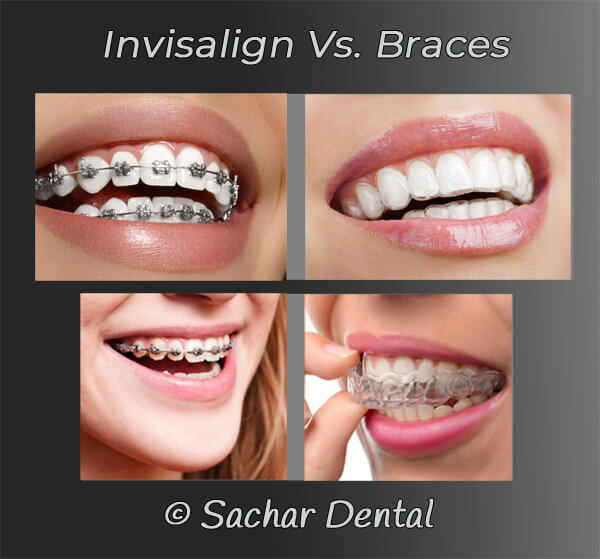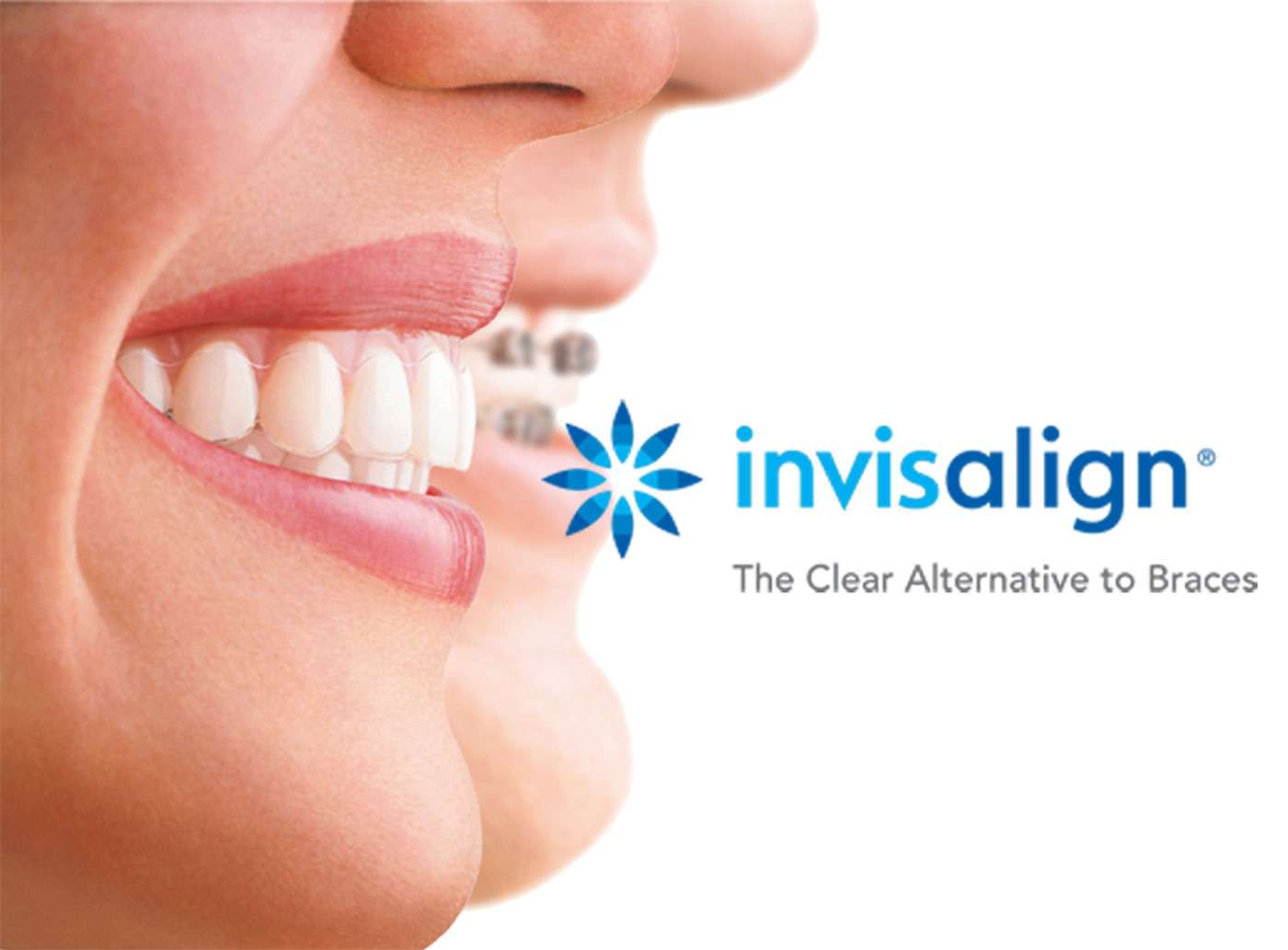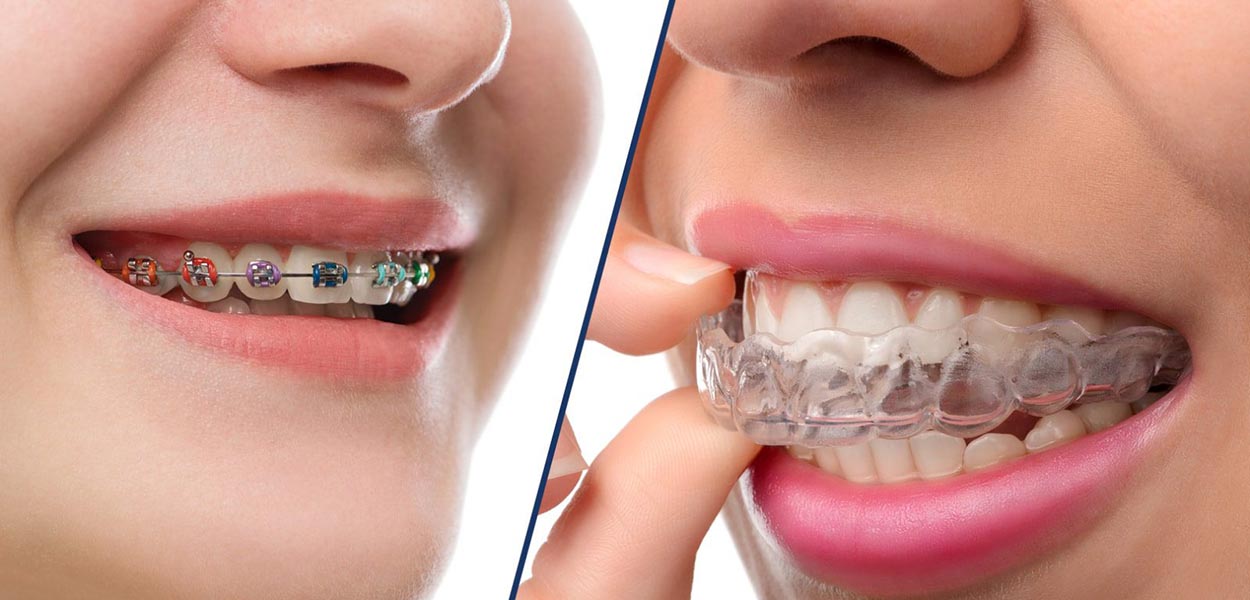Invisalign for Teens: A Modern Solution to Straightening Young Smiles
Wiki Article
Invisalign vs. Conventional Dental braces: Which Alternative Is Right for You?
When thinking about orthodontic treatment, the option in between Invisalign and typical braces offers a number of vital variables that merit cautious analysis. Invisalign provides a discreet choice with detachable aligners, while traditional braces give an extra noticeable yet effective remedy for extreme misalignment.Review of Treatment Options

In comparison, traditional dental braces include steel braces and wires that are bound to the teeth. This approach applies continual stress with time to attain placement. While effective for intricate orthodontic concerns, traditional dental braces require routine visits for changes and can present difficulties in maintaining oral health due to the problem of cleaning up around brackets and cords.
Both options have their benefits, and the option often pivots on details dental conditions, lifestyle preferences, and individual conformity. Eventually, getting in touch with an orthodontic expert is crucial for establishing one of the most appropriate therapy strategy customized to private needs. Comprehending the subtleties of each choice can significantly influence the general success of orthodontic treatment.
Visual Considerations
A significant element affecting the option between Invisalign and standard braces is the aesthetic charm each treatment supplies. Invisalign aligners are crafted from clear plastic, making them essentially undetectable when put on. This discreet appearance is especially appealing to teens and grownups that might really feel awkward about their orthodontic treatment. The ability to preserve a natural smile throughout the placement process can considerably improve the patient's self-confidence in social and professional settings.In comparison, traditional braces include steel brackets and wires, which can be a lot more recognizable. While advancements in orthodontic technology have brought about the development of smaller brackets and colored elastics, standard dental braces still keep a more conspicuous account. For some individuals, the visibility of braces might deter them from seeking necessary therapy.
Eventually, the option between Invisalign and standard dental braces may rest on individual choices relating to aesthetic appeals. Individuals who focus on discretion commonly favor Invisalign, while those who are much less worried concerning visibility may go with traditional braces. Comprehending the visual implications of each option is important for making an educated decision that lines up with one's way of life and preferences.
Comfort and Convenience

In regards to comfort, Invisalign aligners are removable, enabling clients to appreciate their favored foods without restriction and maintain ideal dental health. Cleaning and flossing are streamlined, as the aligners can be taken out throughout these regimens, whereas traditional dental braces require mindful maneuvering around cables and braces.
Additionally, Invisalign's modern system permits less orthodontic check outs. People generally receive numerous sets of aligners simultaneously, which can enhance the therapy procedure and reduce time invested in the orthodontist's chair. On the other hand, standard dental braces necessitate regular modifications, making them much less practical for those with busy routines. Invisalign. Overall, the convenience and convenience of Invisalign make it an YOURURL.com enticing selection for lots of people looking for orthodontic treatment.
Therapy Period and Efficiency
While both Invisalign and standard dental braces work in fixing dental imbalances, the period of therapy can vary significantly in between the 2 choices. Usually, Invisalign treatment can take anywhere from 12 to 18 months, relying on the intricacy of the instance. The clear aligners function by progressively changing teeth into their wanted positions, and routine follow-ups with an orthodontist help make certain progress stays on track.
In contrast, traditional dental braces usually need a longer commitment, generally varying from 18 months to three years. This results from their fixed nature and making use of cables and brackets, which can be a lot more efficient for complicated cases and serious misalignments (Invisalign). The treatment performance of conventional braces is well-documented, as they enable accurate changes and greater control over tooth motion
Ultimately, the selection between Invisalign and standard dental braces may pivot on both the anticipated therapy duration and the details oral issues handy. Consulting with an orthodontist is critical, as they can give customized referrals based on specific demands, making sure the picked technique aligns with desired timeframes and end results.
Expense Contrast and Insurance Coverage Options
Cost plays a significant role in the decision-making procedure for individuals taking into consideration orthodontic treatment, whether going with Invisalign or traditional braces. Usually, the cost of Invisalign varieties from $3,000 to $8,000, while standard dental braces usually cost between $2,000 and $6,000. Factors affecting these costs consist of the intricacy of the situation, the period of therapy, and geographical area.Insurance policy coverage can significantly impact out-of-pocket expenses. Lots of oral insurance plans provide partial insurance coverage for orthodontic therapies, however the specifics can vary extensively. It is critical for people to assess their insurance coverage to establish the degree of insurance coverage for either choice. Normally, typical dental braces might be a lot more frequently covered by insurance plans compared to Invisalign, which some insurance providers classify as an aesthetic procedure.
Additionally, several orthodontic methods offer adaptable repayment plans, making both treatment options a lot more available. Patients should ask about potential financing alternatives and discount rates for ahead of time settlements. Assessing the total price, consisting of insurance benefits and repayment plans, is necessary for making a notified choice that aligns with both visual preferences and budget plan considerations.

Final Thought
In recap, the option between Invisalign and traditional dental braces hinges on numerous elements, including visual choices, comfort, treatment duration, and expense. Invisalign uses a discreet, detachable alternative that helps with dental health and dietary adaptability, while conventional dental braces may be better for intricate dental problems and commonly come with a lower cost factor. Inevitably, consultation with an orthodontist is necessary to examine individual scenarios and figure out one of the most suitable treatment option for best site accomplishing optimum dental alignment.When considering orthodontic therapy, the choice between Invisalign and typical dental braces offers a number of essential elements that warrant mindful analysis.Comparing Invisalign and typical dental braces reveals distinctive treatment options for orthodontic adjustment.While both Invisalign and standard click for more braces are effective in correcting dental imbalances, the duration of treatment can vary considerably between the two choices.Cost plays a significant role in the decision-making process for people thinking about orthodontic therapy, whether opting for Invisalign or conventional braces.In recap, the selection between Invisalign and standard dental braces pivots on multiple variables, consisting of visual choices, convenience, treatment duration, and price.
Report this wiki page